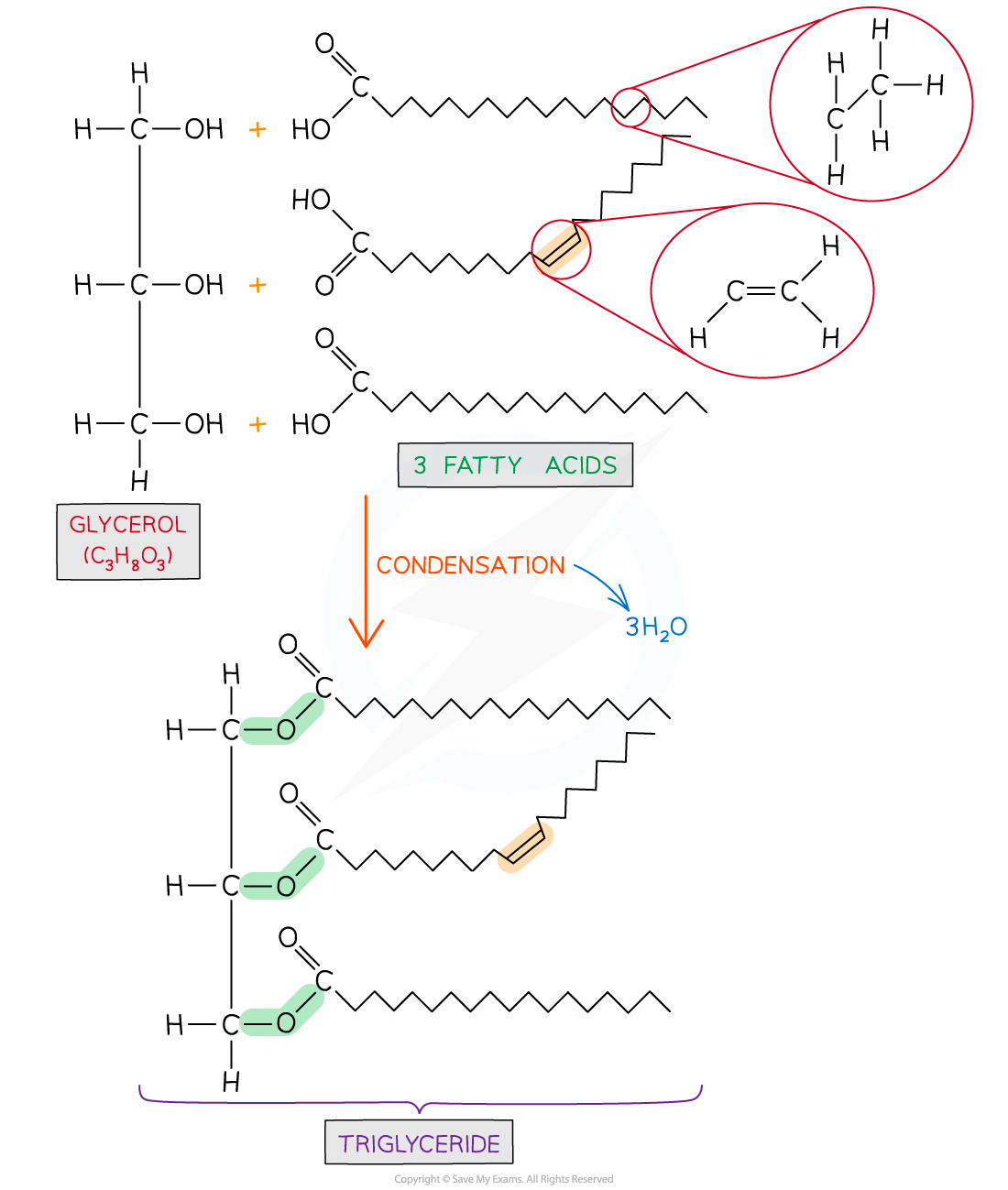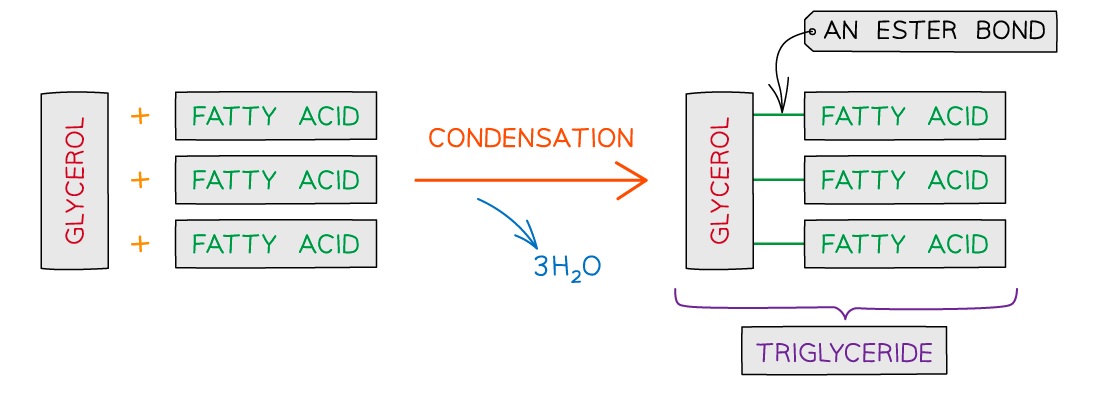Long Term Storage
Lipids are excellent storage compounds
- Lipid macromolecules, like carbohydrates, contain carbon, hydrogen and oxygen atoms
- However, unlike carbohydrates, lipids contain a low proportion of oxygen
- More of the oxygen required for their respiration has to come from the air
- This allows lipids to be energy-dense, maximising the energy content per gram versus carbohydrates
- They contain 2× more energy per gram than most carbohydrates
- Less body mass is required to store a given amount of energy
- Lipids are insoluble so do not affect osmosis, so do not risk upsetting the water balance of the organism
- When lipids are respired, a lot of water is produced compared to the respiration of carbohydrates
- This is called metabolic water and can be used as a dietary water source when drinking water is unavailable
- A camel's hump is not a water sac, it is a lipid-rich storage organ that yields metabolic water for the camel in its dry desert habitat
- A bird's egg also makes use of lipid-rich yolk to provide energy and metabolic water to the growing chick
- This is called metabolic water and can be used as a dietary water source when drinking water is unavailable
- All these features make lipids ideal for long term energy storage
Forms of lipid storage
- In animals, lipids are stored in various areas
- Subcutaneous fats are stored below the skin
- Visceral fats are stored around the major internal organs
- There are genetic and gender differences between how individuals store fat
- Fat is stored in adipose cells, which are specialised to contain large globules of fat
- Adipose cells shrink when the fat is respired to generate metabolic energy
- In many plants, seeds have evolved to store fats to provide energy for a growing seedling plant
- Olives, sunflowers, nuts, coconuts and oilseed rape are good examples of crops whose oils are harvested for edible oil production by humans
Other roles of lipids
- As well as energy storage molecules, lipids have a number of other roles
- Physical protection of soft organs eg. visceral fat around the heart
- Thermal insulation from subcutaneous fat eg. whale blubber
- Subcutaneous fat as a buoyancy aid eg. in seals (fat is less dense than water so assists flotation)
- Waterproofing secretions eg. birds' preening glands or waxy cuticles on leaf surfaces
- Electrical insulation eg. the myelin sheath around certain nerve axons
- Certain photosynthetic pigments eg. carotenoids
- Glycolipids, typically as cell-surface recognition molecules/receptors
Exam Tip
Ensure that you are familiar with the structure of a triglyceride and that you can recognise whether the fatty acids are saturated or unsaturated.
Lipids: Health Claims
- Lipids have been associated with poor health for a long time, even though they perform vital functions in tissues and organs
- High-fat diets tend to supply more chemical energy than an individual needs
- Consuming excess fat can cause an individual to become overweight or obese due to the storage of fat in adipose tissue
- Body Mass Index (BMI) is a rough and ready measure of a person's mass in relation to their height
- The calculation of BMI is as follows

- A BMI below 18.5 is considered underweight
- A BMI 18.5-24.9 is considered normal
- A BMI of 25.0-29.9 is considered overweight
- A BMI of 30.0-39.9 is considered obese
- A BMI of 40.0 or more is considered morbidly obese
- BMI is a crude measurement as it works against individuals who are heavily muscular but who are also extremely lean
- Overweight and obese people have a higher risk of developing type II diabetes and high blood pressure and coronary heart disease
- Because many risk factors combine in the prevalence of these conditions, lipids are by no means the only cause
NOS: Evaluating claims; health claims made about lipids in diets need to be assessed
- Popular literature, TV and social media make claims about various foods and their health benefits
- A food product labelled, 'Low Sugar' may in fact contain a lot of trans-fats but hides that information, or doesn't label it at all!
- Many health claims are based on pseudoscience, or backed up with only very small trials or small samples sizes
- Only scientifically controlled studies are able to prove causal links between food choices and health risks
- Techniques such as randomised clinical trials provide data to inform government policy and consumers about their food choices
- There remain complex challenges for consumers, food producers and governments to ensure a food supply that puts people at least risk of disease whilst ensuring that enough food is produced
Formation of Lipids
- Triglycerides are formed by esterification
- An ester bond forms when the hydroxyl (-OH) group of the glycerol bonds with the carboxyl group (-COOH) of the fatty acid
- The formation of an ester bond is a condensation reaction
- For each ester bond formed a water molecule is released
- The formation of an ester bond is a condensation reaction
- Three fatty acids join to one glycerol molecule to form a triglyceride
- Therefore for one triglyceride to form, three water molecules are released


Formation of a triglyceride from a glycerol molecule and three fatty acid molecules by the process of esterification
